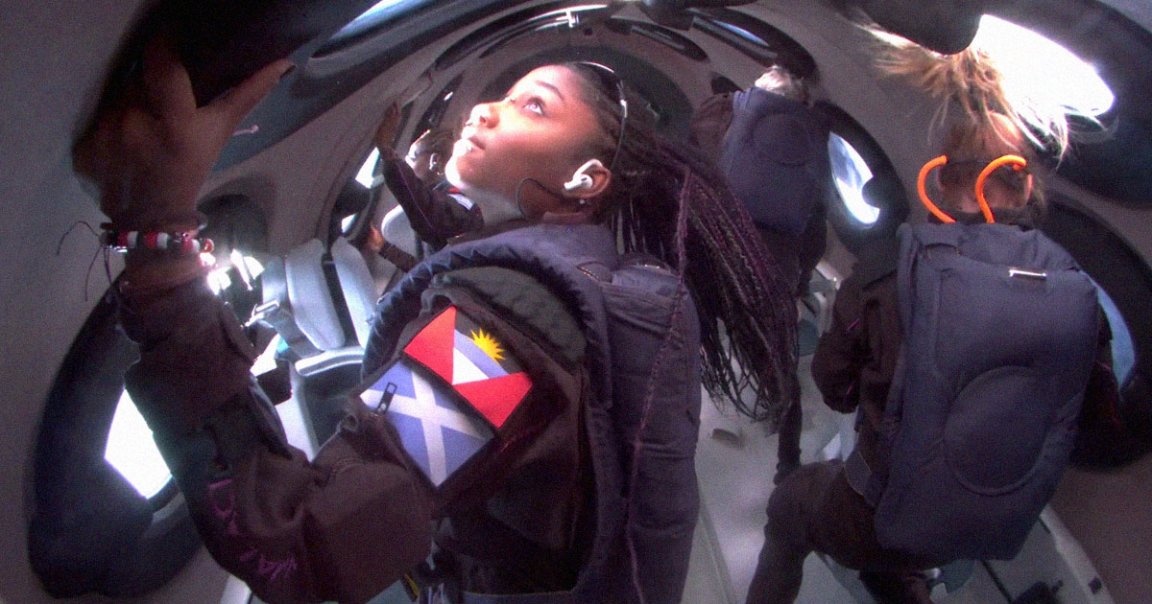
Great Atmosphere
Richard Branson’s space tourism startup Virgin Galactic kicked off its first-ever all-tourist trip into the upper reaches of the atmosphere today — but fell far short of what could reasonably be called “space.”
The mission, dubbed Galactic 02, saw the company’s “spacecraft” VSS Unity rocket to an altitude of just 55 miles, or roughly 290,000 feet, after being released from an airplane down below.
To put that figure into perspective, the US Air Force awards pilots “astronaut wings” as when they fly above an altitude of 50 miles.
To be clear, that’s barely above the confines of the Earth’s upper atmosphere, or mesosphere, a roughly 22 miles-thick band at which meteors burn up and high-altitude clouds can still form.
That also falls far short of the Kármán line, an internationally agreed-upon border at 62 miles that roughly demarcates the border between the Earth’s atmosphere and outer space. Even that line was arbitrarily chosen by leaders back in the 1960s and falls dozens of miles short of an altitude at which it’s feasible to enter a stable orbit around our planet.
After all, there’s no physical boundary between the end of the atmosphere and space.
Free Fallin’
As a result, the crew on board the Galactic 02 was only able to feel the effects of weightlessness over a couple of minutes because the vehicle was rocketing back towards the ground at fast speeds — not because it was orbiting the Earth, or what amounts to constantly falling in the absence of air resistance.
To call the Galactic 02 a “spacecraft” is therefore fairly misleading. Considering it’s not designed to fly past the Kármán line, it’d be technically more accurate to refer to it as a high-altitude aircraft.
At the same time, we don’t want to hate on Virgin Galactic’s achievement too much. The company has been promising for decades to launch space tourists to the edge of space.
While the company clearly still has a long way to go to actually make good on this promise, at least today’s mission was a step in the right direction.
And in many ways, it’s a bit of a Hail Mary. Virgin Galactic has been burning through billions of dollars over the last three years. Branson’s other space venture Virgin Orbit is also on the rocks, having laid off 85 percent of its staff and filed for bankruptcy earlier this year.
Correction: A previous version of this post incorrectly stated that the max apogee of the flight was 49.7 miles. In fact, the VSS Unity reached a max altitude of 55 miles.
More on Virgin Galactic: Virgin Galactic Lost an Absolutely Staggering Amount of Money Last Year